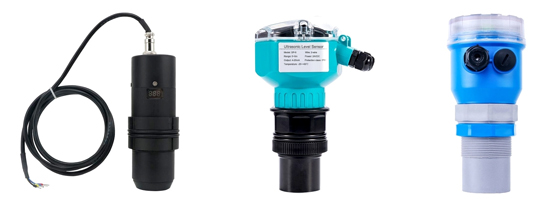What Environment Will Affect the Ultrasonic Level Sensor?
There should be no obstacles in the area radiated by the emitted ultrasonic beam between the emitting surface of the ultrasonic liquid level sensor probe and the surface of the medium to be measured. Therefore, the installation should be avoided as far as possible from the internal facilities, such as brackets, on-site equipment and so on. When installing the level sensor, the sensor must be kept at a certain distance from the tank wall, and the transmission direction of the transducer should be perpendicular to the liquid surface as much as possible. Special attention is that when using the ultrasonic level sensor, it is necessary to ensure that the material level cannot enter the measurement blind area.
The ultrasonic level sensor is a precise instrument in the level controller, but its requirements for the use environment are relatively strict. The following environmental factors will affect the normal operation of the ultrasonic level sensor.

Effect of stirring on ultrasonic liquid level sensor
The on-site container is often stirred, and the liquid fluctuation is relatively large, which affects the measurement of the ultrasonic liquid level sensor; in this case, the speed of the stirrer can be appropriately reduced, or the probe can be deviated from the stirring center; a still can be installed to effectively eliminate the need for stirring. The effect of agitation on the liquid level measurement.
Effect of foam on ultrasonic level sensor
In the process of measuring the liquid level with the ultrasonic liquid level sensor, the interference of foam is often encountered. Foams can be divided into four categories according to their properties: dry, wet, neutral, and heavy. Dry foam and wet foam can reflect the ultrasonic wave back, so it has no effect on using the ultrasonic liquid level sensor to measure; the neutral foam will absorb and diffuse part of the ultrasonic wave, which will weaken the reflection of the ultrasonic wave, resulting in the instability of the echo. Therefore, when the surface of the medium is thick and thick foam, the measurement error of the ultrasonic liquid level sensor will be large, or even impossible to measure. In the case of serious interference, the ultrasonic level sensor can shield the interference of foam by adding a wave absorbing pipe.
Effect of steam and mist on ultrasonic liquid level sensor
When the working environment temperature is high, the liquid medium is prone to produce steam or mist. Since the steam is lighter than the air, it floats to the tank, forming a steam layer that absorbs and scatters the ultrasonic pulse. The influence of the vapor layer on the measurement can be reduced or weakened by adding a still-pipe.
Effect of blind spot on ultrasonic liquid level sensor
The blind spot of the ultrasonic liquid level sensor is just like the human eye. The blind spot is when the object is very close to the eye, but it cannot be seen clearly. This distance is called the blind spot. The blind zone of the ultrasonic level sensor varies according to the range. If the range is small, the blind zone is small; if the range is large, the blind zone is large. Therefore, the liquid level required to be measured shall not be higher than the blind area of the ultrasonic liquid level sensor.
Effect of pressure and temperature on ultrasonic level sensor
The speed of sound cannot propagate in a vacuum, and the essence of ultrasonic waves is a sound wave, and it belongs to a mechanical wave, so it cannot propagate in a vacuum. Secondly, it is temperature. The higher the temperature, the greater the ultrasonic speed. Although the parameters of the ultrasonic level sensor have a pressure value, as the temperature increases, the pressure value will decrease accordingly, so pay attention to this when selecting models. parameter. In addition, for the liquid level sensor installed outdoors, measures such as adding a sunshade can be used to reduce the influence of temperature factors.
As a non-contact material level and liquid level measuring instrument, the ultrasonic level sensor has the characteristics of high measurement accuracy, simple installation, and basically maintenance-free. It can be used to measure the liquid level in various containers, and can also measure the water level of canals, pools, reservoirs, rivers, lakes and seas.
When the ultrasonic level sensor is working, the ultrasonic transducer (probe) emits high-frequency pulsed sound waves, which are transmitted back when they encounter the surface of the water to be measured, and the reflected echoes are received by the transducer and converted into electrical signals. The propagation time of the sound wave is proportional to the distance from the transducer to the surface of the measured medium. When the ultrasonic level sensor transmits ultrasonic pulses, it cannot detect the reflected echo at the same time. Because the transmitted ultrasonic liquid pulse has a certain time width, and the transducer has residual vibration after the ultrasonic wave is reflected, the transmitted echo cannot be detected during the period, resulting in the overlap of the reflected wave and the transmitted wave in a small area under the surface of the probe. The size of the blind zone is related to the range of the ultrasonic level sensor.

